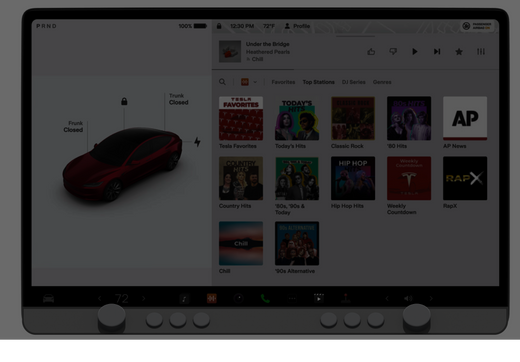Why Physical Buttons Are Safer Than Touchscreens in Cars
In the modern automotive industry, touchscreens have become a dominant interface for controlling various functions in vehicles. However, the question of safety often arises: are touchscreens really better than physical buttons? Evidence from scientific research and human factors studies suggests that physical buttons offer significant safety advantages over touchscreens, especially in driving environments where distractions can have serious consequences.
Scientific Evidence Supporting Physical Buttons
1. Faster and More Accurate Interactions
A 2020 study by the Swedish car magazine Vi Bilägare compared touchscreens to traditional physical buttons. The study found that drivers required 4.6 times more time to perform basic tasks on a touchscreen compared to physical controls. The additional time spent looking at a screen significantly increases the risk of accidents.
"Physical buttons allow for tactile feedback, enabling drivers to operate controls without taking their eyes off the road," notes the study.
2. Reduced Cognitive Load
Touchscreens often demand more cognitive resources. Research published in the journal Human Factors highlights that physical controls benefit from muscle memory and require less mental effort to operate. Drivers can feel for a specific button or knob, allowing them to keep their focus on driving.
"When using touchscreens, drivers must visually locate the control and ensure accuracy, which diverts attention from the road," the study explains.
3. Minimizing Distraction-Related Risks
The National Highway Traffic Safety Administration (NHTSA) defines a distraction as any activity that diverts attention from driving. In a 2019 report, NHTSA emphasized that touchscreens often create a visual-manual distraction that doubles the likelihood of crashes compared to using physical controls.
Key Advantages of Physical Buttons
1. Tactile Feedback
Physical buttons provide immediate tactile confirmation. Drivers can feel when a button is pressed without needing visual confirmation, which is impossible with touchscreens.
2. Muscle Memory
With regular use, drivers develop muscle memory for physical controls. This familiarity significantly reduces the time spent interacting with in-car systems.
3. Operational Reliability
Unlike touchscreens, physical buttons are unaffected by smudges, sunlight glare, or software glitches, common issues that can hinder touchscreen usability.
Real-World Implications
The integration of touchscreens in cars has undoubtedly brought convenience and modern aesthetics, but at a cost. Studies and expert opinions highlight the need for a balanced approach:
"While touchscreens offer flexibility and advanced features, they should complement physical buttons, not replace them entirely," says Dr. David Strayer, a leading researcher in cognitive distraction and driving safety.
Conclusion: A Safer Road Ahead
Physical buttons remain a crucial component of safe vehicle design. By allowing drivers to keep their attention on the road and hands on the wheel, these tactile controls reduce the risks associated with distractions. As automotive technology continues to evolve, safety should remain the top priority and physical buttons play an essential role in achieving that goal.
By integrating physical buttons into products like the Ctrl-Bar, we aim to combine the best of modern technology with time-tested safety principles. Your safety matters, and we are committed to helping you stay focused on the road ahead.

